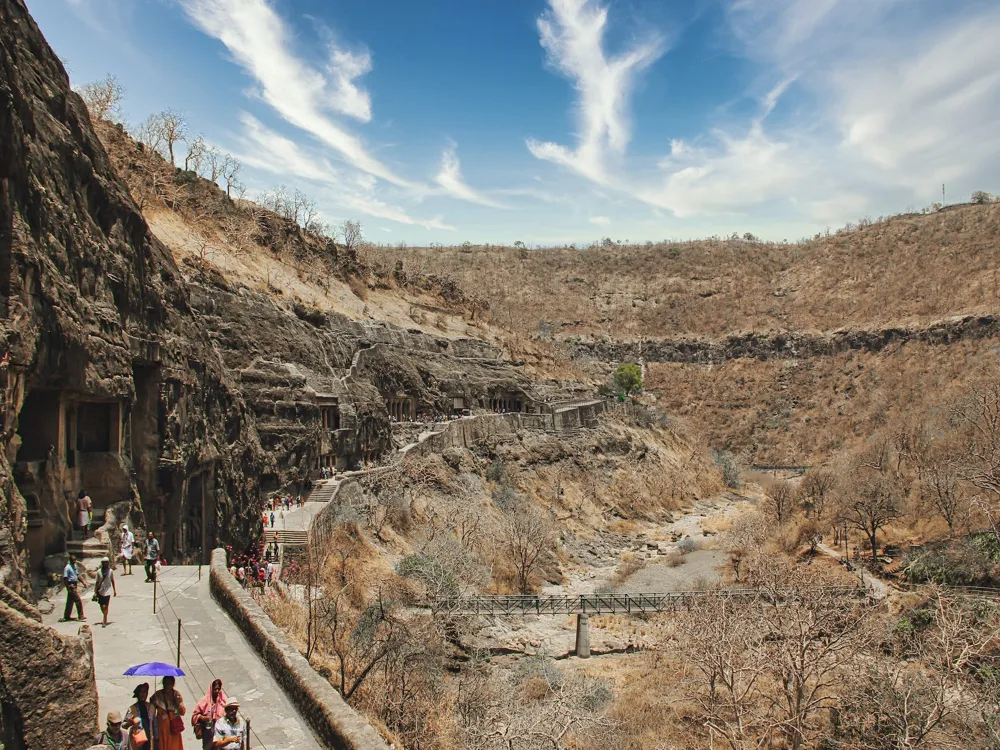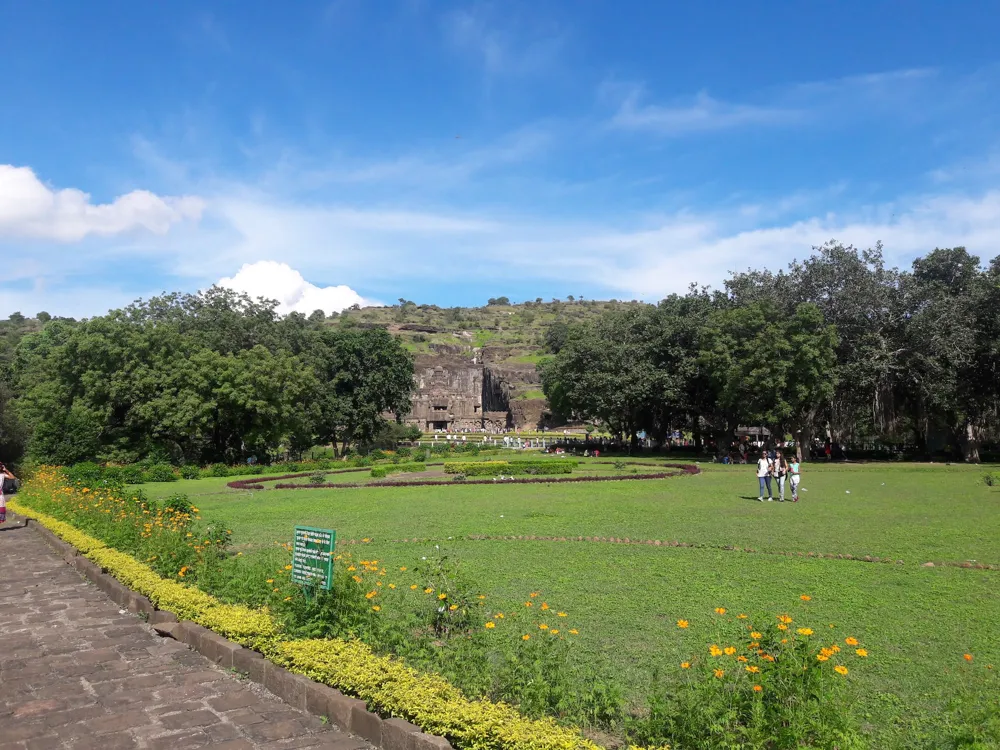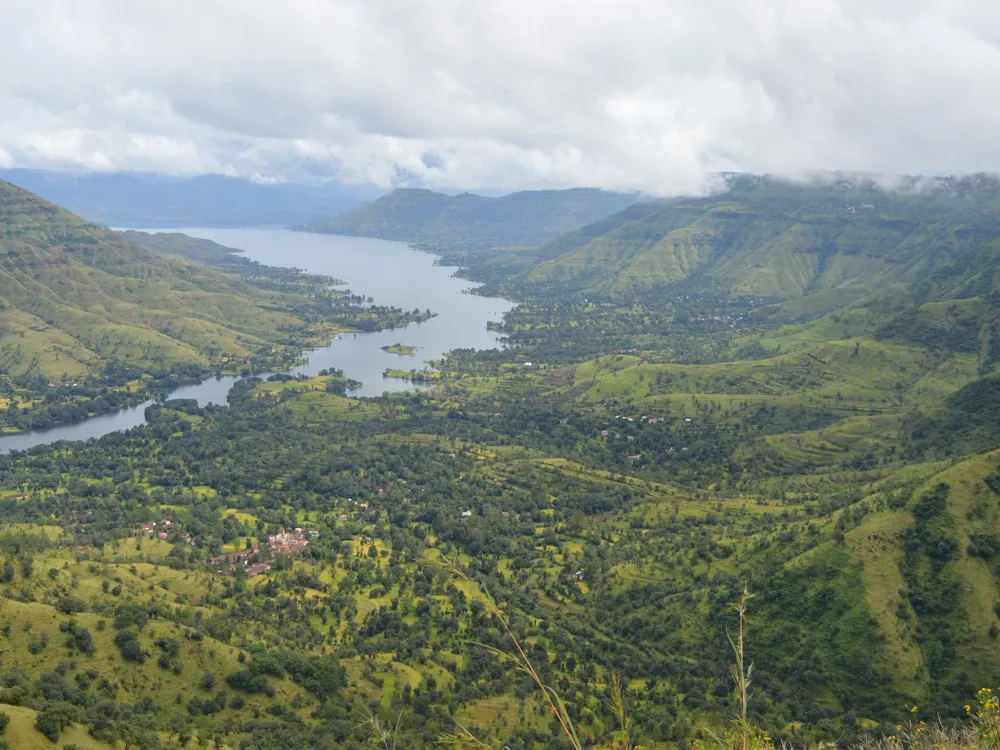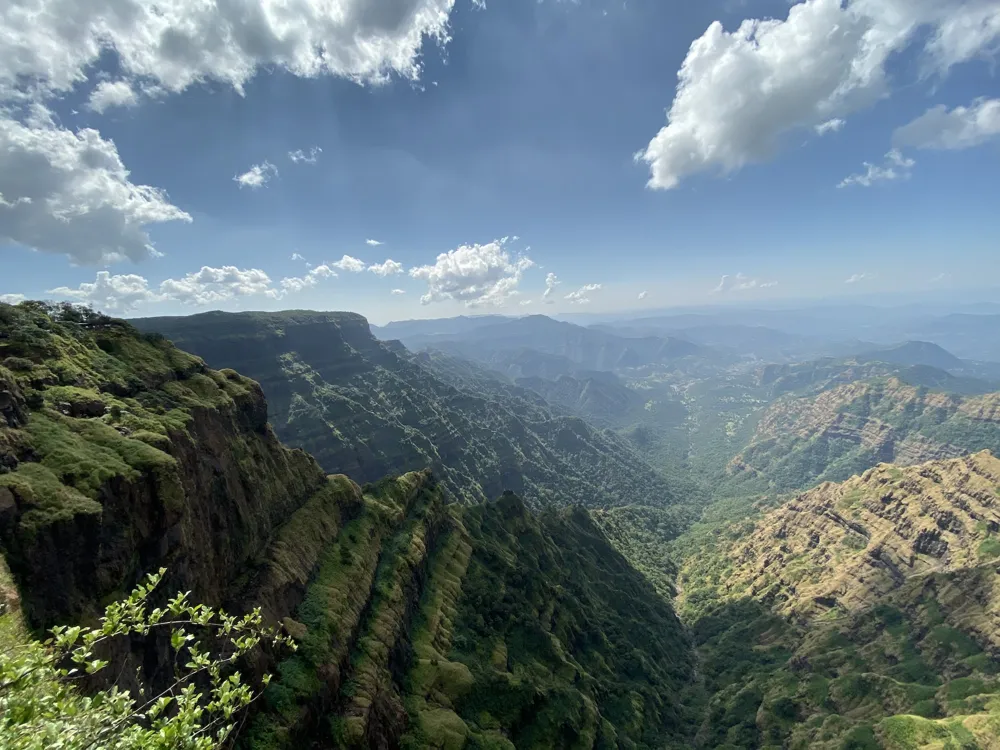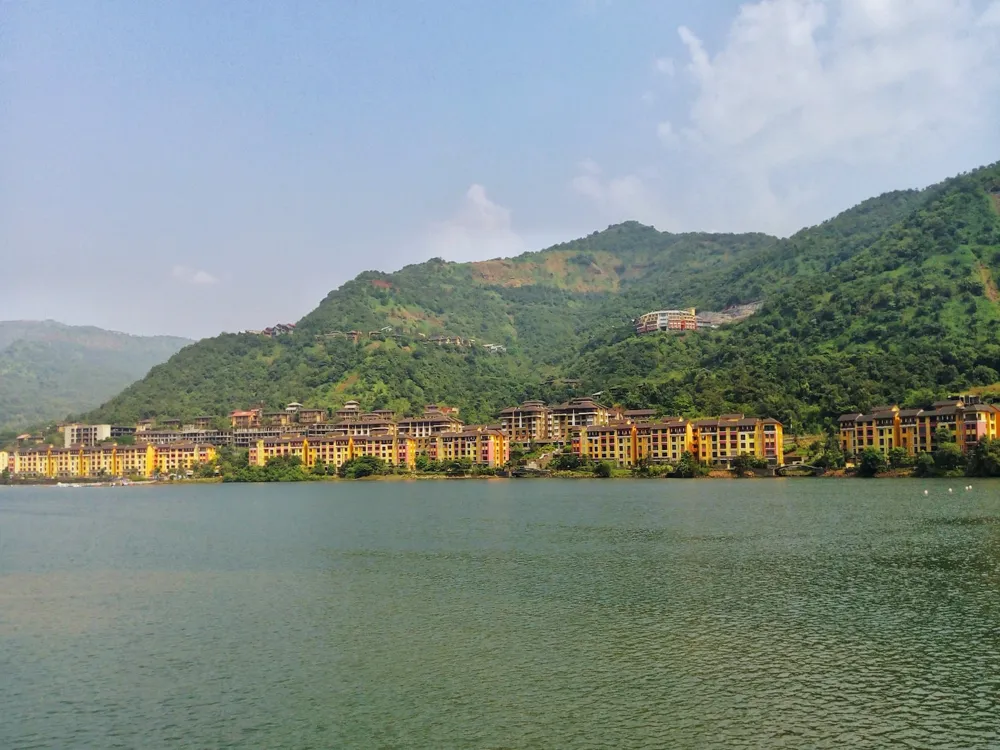Aurangabad, a city steeped in history and culture, is located in the heart of Maharashtra, India. Known for its rich heritage, Aurangabad is often referred to as the 'City of Gates' due to its many historical gateways. The city's history dates back to the 6th century CE and it flourished under various dynasties, notably the Mughals, who left a significant imprint on its architecture and culture. Today, Aurangabad is a bustling city blending ancient traditions with modernity, making it a fascinating destination for travelers. The city's name is derived from the Mughal Emperor Aurangzeb, who made it his capital. This period marked a golden era in Aurangabad's history, with the construction of many architectural marvels. Apart from its historical significance, the city is also known for its vibrant culture, colorful festivals, exquisite handicrafts like Himroo shawls, and a delightful culinary scene that mirrors the diversity of its past and present. Aurangabad serves as an excellent base for exploring the famous Ajanta and Ellora Caves, UNESCO World Heritage Sites that attract thousands of visitors each year. The city's strategic location makes it a gateway to the tourist-rich region of Maharashtra, offering a unique blend of history, culture, and natural beauty. Located in the Deccan Plateau, Aurangabad enjoys a semiarid climate. The city experiences three main seasons: summer, monsoon, and winter. Summers (March to May) are hot and dry, while monsoons (June to September) bring substantial rainfall, transforming the landscape into a lush green haven. Winters (November to February) are mild and pleasant, making it the best time to visit Aurangabad. Aurangabad is a melting pot of various cultures and religions, with Hinduism, Islam, Buddhism, and Jainism being the major ones. Marathi is the most widely spoken language, followed by Hindi and Urdu. The city's multicultural fabric is reflected in its festivals, cuisine, and daily life, creating a vibrant and inclusive atmosphere. The historical significance of Aurangabad is immense. It was a major trading hub on the Silk Route and played a pivotal role in the region's history. The city's numerous historical monuments, including the Bibi Ka Maqbara, a replica of the Taj Mahal, and the medieval fortifications, stand as testaments to its glorious past. Aurangabad's architecture is a confluence of various styles, influenced by its diverse rulers over the centuries. The city's architectural landscape is dotted with ancient temples, grand mosques, and historical monuments, each narrating a story of its epoch. The Mughal period marked a renaissance in Aurangabad's architectural history. Magnificent structures like Bibi Ka Maqbara, known as the 'Taj of the Deccan', and the Aurangabad Caves reflect the artistic prowess of Mughal architects. Mughal architecture in Aurangabad is characterized by intricate designs, expansive gardens, and the use of marble and precious stones. The city's medieval past is evident in its fortifications like the Daulatabad Fort, which was once considered impregnable. These structures exhibit the military architecture of the time, with strong walls, moats, and intricate defense mechanisms. Aurangabad houses several religious structures that showcase the spiritual diversity of the region. The Ajanta and Ellora Caves, with their exquisite rock-cut temples and monasteries, are prime examples of ancient Indian art and architecture. Other notable structures include the Grishneshwar Temple, one of the 12 Jyotirlinga shrines in India, and the Jama Masjid, a symbol of Islamic architectural excellence. In recent times, Aurangabad has seen the emergence of contemporary architecture, blending modern design with traditional aesthetics. This fusion is evident in the city's educational institutions, malls, and residential complexes, contributing to Aurangabad's evolving skyline. Winter, from November to February, is the ideal time to visit Aurangabad, thanks to the pleasant weather, which is perfect for sightseeing and outdoor activities. Aurangabad is well-connected by bus, auto-rickshaws, and taxis. For a more immersive experience, consider hiring a bicycle or a motorbike to explore the city at your own pace. From luxury hotels to budget guesthouses, Aurangabad offers a range of accommodation options to suit every traveler's needs. Staying in the city center is advisable for easy access to major attractions. Respect local customs and traditions. Dress modestly, especially when visiting religious sites. It's also a good idea to learn a few phrases in Marathi to connect better with locals. Aurangabad's cuisine is a blend of Mughlai and Maharashtrian flavors. Don't miss out on trying the local delicacies like Naan Qalia and Aurangabadi Biryani. Aurangabad is well-connected to major cities in India by air, rail, and road. The Aurangabad Airport has regular flights to and from major Indian cities. The city's railway station is a major junction, connecting it to various parts of the country. Additionally, a network of national and state highways makes road travel to Aurangabad convenient and enjoyable.Overview of Aurangabad, Maharashtra
Geography and Climate
Demographics and Culture
Significance in History
Architecture of Aurangabad
Mughal Architecture
Medieval Fortifications
Religious Structures
Modern Influences
Tips When Visiting Aurangabad
Best Time to Visit
Local Transportation
Accommodation Options
Cultural Etiquette
Food and Dining
How To Reach Aurangabad
Goga Baba Hill
Aurangabad
Maharashtra Goa
NaN onwards
View aurangabad Packages
Aurangabad Travel Packages
View All Packages For Aurangabad
Top Hotel Collections for Aurangabad

Private Pool

Luxury Hotels

5-Star Hotels

Pet Friendly
Top Hotels Near Aurangabad
Other Top Ranking Places In Aurangabad
View All Places To Visit In aurangabad
View aurangabad Packages
Aurangabad Travel Packages
View All Packages For Aurangabad
Top Hotel Collections for Aurangabad

Private Pool

Luxury Hotels

5-Star Hotels

Pet Friendly







